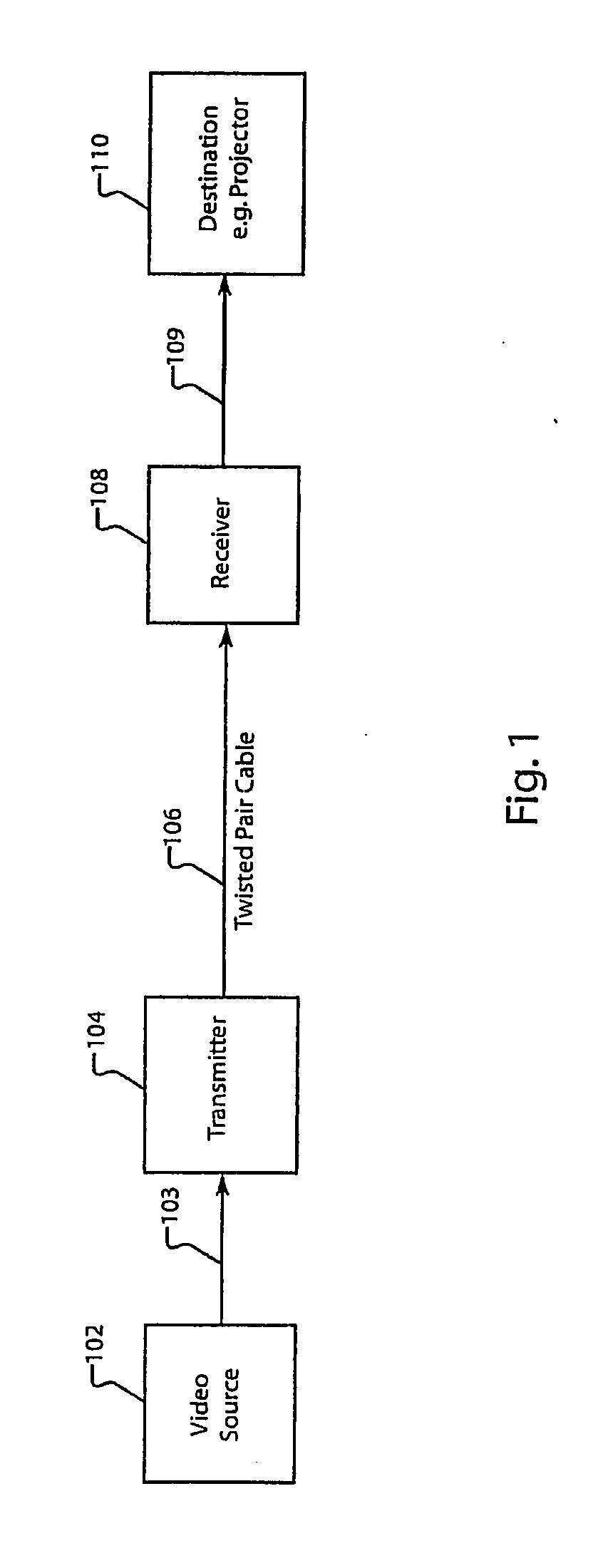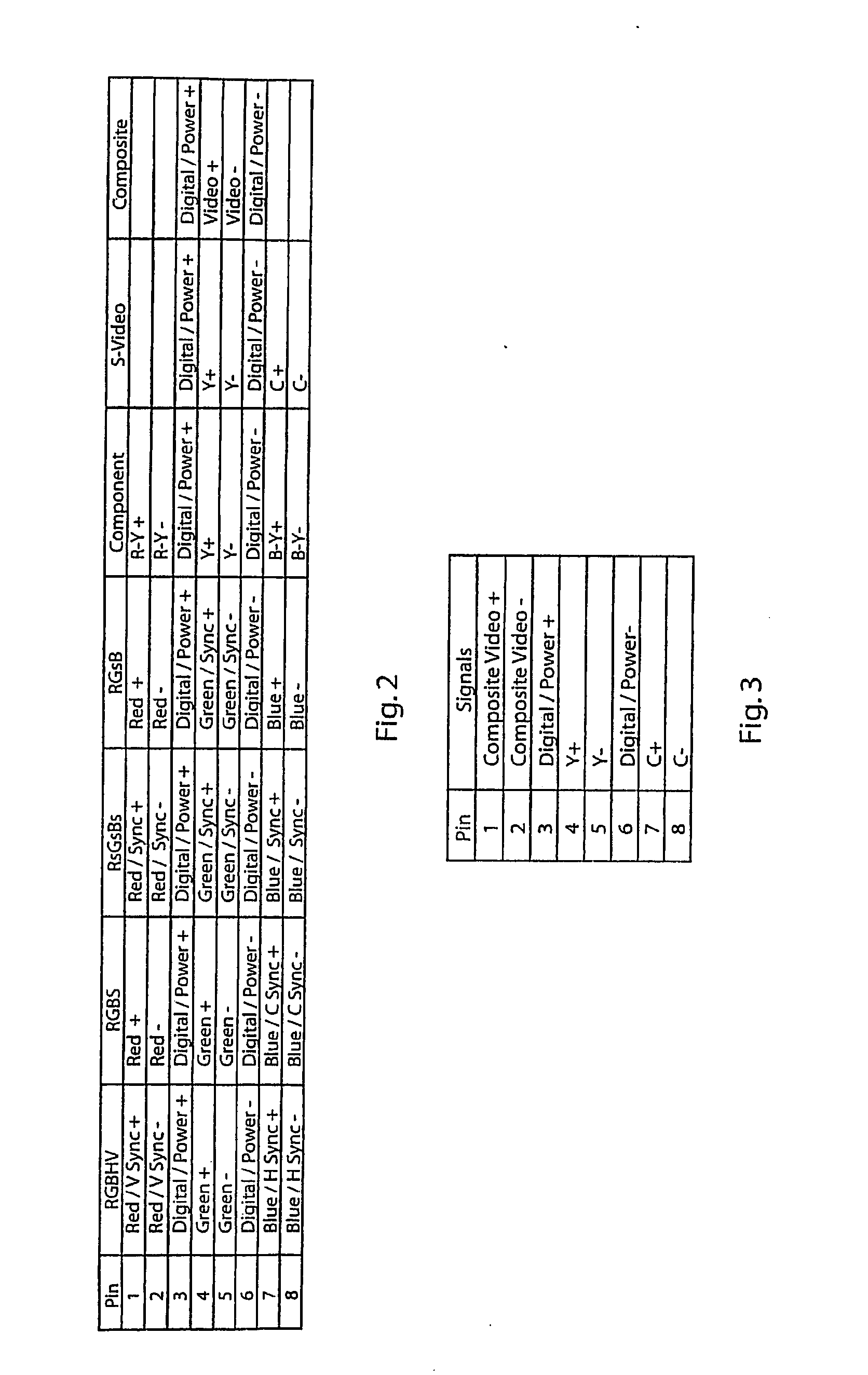Method and apparatus for improving the quality of a transmitted video signal
a video signal and transmission cable technology, applied in the field of video transmission, can solve the problems of inability to accurately convey the signal, affecting the loss of the transmission cable, so as to improve the quality of the transmitted signal, minimize the dc offset, and ensure the effect of transmission quality
- Summary
- Abstract
- Description
- Claims
- Application Information
AI Technical Summary
Benefits of technology
Problems solved by technology
Method used
Image
Examples
Embodiment Construction
[0029]The invention comprises a method and apparatus for restoration of DC reference voltage levels in video signals transmitted over long distances using twisted pair conductors. In the following description, numerous specific details are set forth in order to provide a more thorough description of the present invention. It will be apparent, however, to one skilled in the art, that the present invention may be practiced without these specific details. In other instances, well-known features have not been described in detail so as not to obscure the invention.
[0030]In one or more embodiments, the invention comprises a transmitter and a receiver tandem coupled together over a twisted pair cable for communication of video signals, including composite video, component video, S-Video, computer-video, and other high resolution video signals, over long distances. Embodiments of the present invention include one or more DC restore circuits to improve the quality of the transmitted video si...
PUM
 Login to View More
Login to View More Abstract
Description
Claims
Application Information
 Login to View More
Login to View More - R&D
- Intellectual Property
- Life Sciences
- Materials
- Tech Scout
- Unparalleled Data Quality
- Higher Quality Content
- 60% Fewer Hallucinations
Browse by: Latest US Patents, China's latest patents, Technical Efficacy Thesaurus, Application Domain, Technology Topic, Popular Technical Reports.
© 2025 PatSnap. All rights reserved.Legal|Privacy policy|Modern Slavery Act Transparency Statement|Sitemap|About US| Contact US: help@patsnap.com



